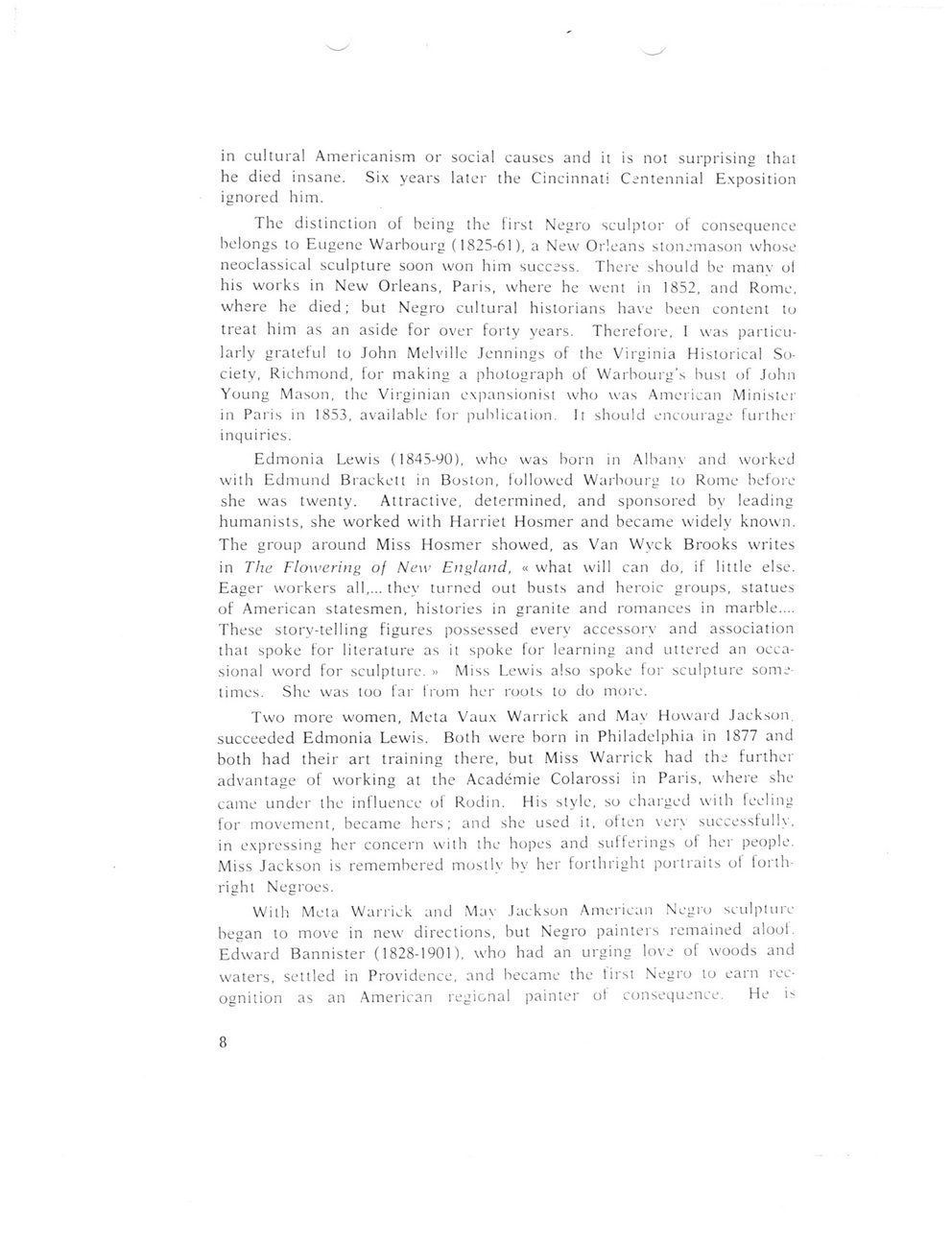This text was obtained via automated optical character recognition.
It has not been edited and may therefore contain several errors.
in cultural Americanism or social causes and it is not surprising that he died insane. Six years later the Cincinnati Centennial Exposition ignored him. The distinction of being the first Negro sculptor of consequence belongs to Eugene Warbourg (1825-61), a New Orleans stonemason whose neoclassical sculpture soon won him success. There should be manv ol his works in New Orleans, Paris, where he went in 1852, and Rome, where he died; but Negro cultural historians have been content to treat him as an aside for over forty years. Therefore, I was particularly grateful to John Melville Jennings of the Virginia Historical Society, Richmond, for making a photograph of Warbourg?s bust of John Young Mason, the Virginian expansionist who was American Minister in Paris in 1853, available for publication. It should encourage further inquiries. Edmonia Lewis (1845-90), who was born in Albany and worked with Edmund Brackett in Boston, followed Warbourg to Rome before she was twenty. Attractive, determined, and sponsored by leading humanists, she worked with Harriet Hosmer and became widely known. The group around Miss Hosmer showed, as Van Wyck Brooks writes in The Flowering of Ne\\> England, ? what will can do, if little else. Eager workers all,... they turned out busts and heroic groups, statues of American statesmen, histories in granite and romances in marble.... These story-telling figures possessed every accessory and association that spoke for literature as it spoke for learning and uttered an occasional w'ord for sculpture. ? Miss Lewis also spoke for sculpture sometimes. She was too far from her roots to do more. Two more women, Meta Vaux Warrick and May Howard Jackson, succeeded Edmonia Lewis. Both were born in Philadelphia in 1877 and both had their art training there, but Miss Warrick had the further advantage of working at the Academie Colarossi in Paris, where she came under the influence ol Rodin. His style, so charged with feeling for movement, became hers; and she used it, often very successfully, in expressing her concern with the hopes and sufferings of her people. Miss Jackson is remembered mostly by her forthright portraits ol lorth-right Negroes. With Meta Warrick and May Jackson American Negro sculpture began to move in new directions, but Negro painters remained alool. Edward Bannister (1828-1901), who had an urging love of woods and waters, settled in Providence, and became the first Negro to earn recognition as an American regional painter of consequence. He is

Barthe, Richmond American-Negro-Art-07